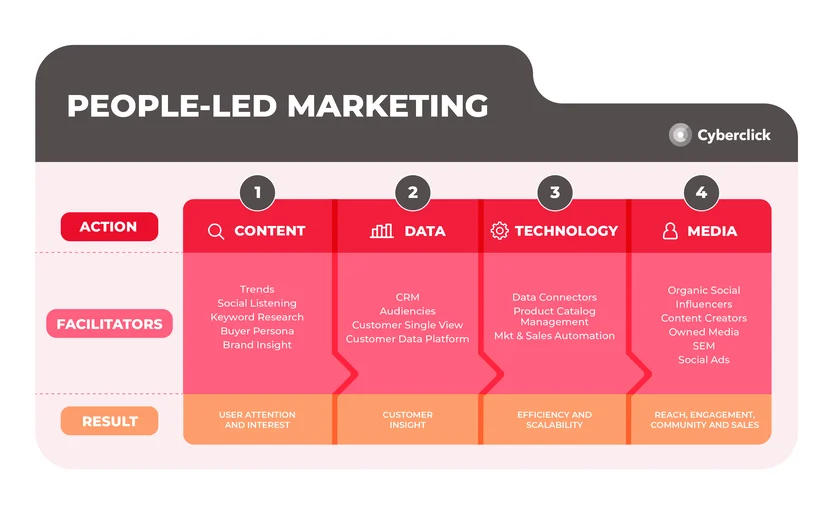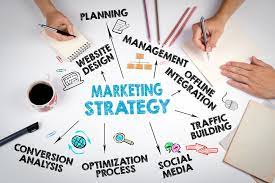Introduction to People in Marketing
In the ever-evolving marketing world, the concept of “People” plays a pivotal role in shaping successful strategies for employees. At its core, marketing is not just about promoting products or services; it is about understanding, engaging, and building relationships with individuals—employees, customers, employees, stakeholders, and communities. These “people” form the backbone of any marketing initiative and are integral to creating meaningful and sustainable brand connections.
The first aspect of People in Marketing involves understanding the target audience. Businesses must delve deep into customer behavior, preferences, and needs to design campaigns that resonate on a personal level. This requires robust market research and data analysis to develop accurate customer personas, enabling marketers to tailor messages and offerings effectively.
Equally important are the employees and teams behind the scenes. Employees act as the face of the brand, directly influencing customer experiences. Empowering employees through training, alignment with brand values, and fostering a sense of ownership can transform them into passionate brand ambassadors, enhancing customer loyalty and trust.
People in marketing also extend to the broader community. Modern consumers expect brands to show empathy, inclusivity, and social responsibility. Businesses that actively listen to their communities and address their concerns are more likely to build lasting relationships and positive brand perceptions.
In today’s digital age, the rise of social media and real-time communication has amplified the importance of people. Engaging authentically with audiences, responding to feedback, and creating meaningful connections have become non-negotiable for building a strong brand presence.
Ultimately, People in Marketing is about recognizing the human element at every touchpoint. By prioritizing relationships, trust, and authenticity, businesses can achieve their objectives and create a lasting impact in the lives of their customers and stakeholders.

Some Key People in Marketing
In business, marketing stands as a pivotal facet, requiring a collaborative effort from diverse employees to propel products, services, or brands toward intended audiences. These individuals hold pivotal roles in devising and executing successful marketing strategies that stimulate sales, enhance brand recognition, and foster engagement with customers. Let’s delve into the pivotal roles and responsibilities undertaken by these marketing stalwarts:
1. Marketing Manager
The marketing manager shoulders the responsibility of employees supervising the entire marketing team and formulating comprehensive marketing strategies. They analyze market trends, consumer behavior, and competitive landscapes to develop campaigns aligned with the company’s objectives. Marketing managers also allocate budgets, set goals, and assess the efficacy of marketing endeavors.
2. Brand Manager
Brand managers are dedicated to establishing and preserving a robust brand image for a company or product. These employees focus on brand positioning, messaging, and imaginative campaigns tailored to resonate with the target audience. Brand managers often collaborate with marketing teams to ensure a consistent brand portrayal across all marketing platforms.
3. Digital Marketer
Digital marketers harness online platforms and technologies to endorse products or services. These employees orchestrate digital marketing campaigns, encompassing activities like email marketing, social media engagement, search engine optimization (SEO), pay-per-click (PPC) advertising, and content marketing.
4. Content Marketer
Content marketers shoulder the task of curating valuable and pertinent content that captivates and engrosses the target audience. These employees craft blog posts, articles, videos, infographics, and various content formats to boost traffic, establish expertise, and ultimately transform potential leads into customers.
5. Social Media Manager
Social media managers oversee a company’s presence across diverse social media platforms. These employees forge social media strategies, generate and curate content, interact with followers, and monitor social media metrics to optimize performance.
6. Marketing Analyst
Marketing analysts harness data and analytics tools to assess the efficiency of marketing campaigns. These employees track key performance indicators (KPIs) to gauge return on investment (ROI) and offer insights to refine forthcoming marketing endeavors.
7. Public Relations (PR) Specialist
PR specialists steer the public image and standing of a company or brand. These employees manage interactions with media, draft press releases, and navigate crisis communications to uphold a favorable public perception.
8. Market Researcher
Market research employees conduct studies and collate data to comprehend consumer preferences, behaviors, and market trends. This intelligence shapes marketing strategies and informs product development.
9. Advertising Manager
Advertising managers oversee the creation and execution of advertising campaigns. These employees collaborate with creative teams, copywriters, and media planners to roll out compelling advertisements that resonate with the intended audience.
10. Sales and Marketing Coordinator
Sales and marketing coordinators serve as a bridge between marketing and sales teams. These employees facilitate the coordination of promotional activities, oversee lead generation, and ensure seamless communication between departments.
These roles of employees often exhibit interplay, particularly in smaller organizations, and effective teamwork is pivotal for the fruition of prosperous marketing campaigns. Given the swift evolution within the marketing sphere, these employees must remain attuned to the latest trends, tools, and technologies, ensuring their ability to stay competitive and deliver substantial outcomes for their enterprises.

Measure the Effectiveness of People in Marketing
Measuring the effectiveness of people in marketing is essential to understanding the impact of their efforts and optimizing marketing strategies. Here are a few key performance indicators (KPIs) and strategies to measure the effectiveness of advertising professionals:
1. Return on Investment (ROI)
Calculate the ROI of advertising and marketing campaigns by comparing and evaluating the price of the campaign to the sales generated as a result. This helps determine the profitability of marketing efforts.
2. Conversion Rate
Measure the percentage of website visitors or leads that take a desired action, such as making a purchase or filling out a form. This indicates how successful marketing efforts are at driving conversions.
3. Customer Acquisition Cost (CAC)
Determine the cost of acquiring each new customer through marketing efforts. A lower CAC indicates more efficient marketing strategies.
4. Customer Lifetime Value (CLV)
Calculate the total value a customer brings to the company over their entire lifetime. A high CLV shows the effectiveness of marketing efforts in retaining valuable customers.
5. Brand Awareness and Recall
Conduct surveys or use brand monitoring tools to measure brand awareness and recall among the target audience. This shows how well marketing efforts have increased brand recognition.
6. Website Traffic and Engagement
Analyze website traffic metrics, such as the number of visitors, time spent on the site, and bounce rate. Higher traffic and engagement indicate effective marketing strategies driving interest.
7. Social Media Metrics
Monitor social media engagement metrics, such as likes, shares, comments, and follower growth. Strong engagement indicates effective social media marketing efforts.
8. Lead Quality and Quantity
Measure the number and quality of leads generated through marketing efforts. High-quality leads are more likely to convert into customers.

9. Customer Retention and Churn Rate
Analyze customer retention rates and churn rates (percentage of customers lost). Effective marketing efforts should contribute to customer loyalty and reduce churn.
10. Marketing Attribution
Use multi-touch attribution models to determine which marketing channels and campaigns contribute most significantly to conversions and revenue.
11. Customer Feedback and Surveys
Collect feedback from customers to gauge their satisfaction and perception of the brand. Positive feedback indicates effective marketing strategies.
12. A/B Testing
Conduct A/B tests for marketing campaigns to compare different strategies and determine which ones yield the best results.
13. Market Share and Competitor Analysis
Monitor changes in market share and conduct competitor analysis to assess the effectiveness of marketing efforts in gaining a competitive edge.
14. Sales Team Feedback
Gather feedback from the sales team to understand the quality of leads generated by marketing and how well marketing materials support the sales process.
By regularly tracking these KPIs and using various measurement methods, businesses can gain valuable insights into the effectiveness of people in marketing. This data-driven approach enables them to make informed decisions, optimize marketing strategies, and allocate resources more effectively to achieve business goals.

How do I build a People-Based Marketing Strategy?
Building a people-based advertising approach entails crafting a personalized approach that places the customer at the center of all advertising efforts. This method is based on knowledge of the needs, choices, and behaviors of individual clients to deliver relevant and attractive reviews. Here are the steps to build a human-based total advertising method:
1. Customer Segmentation
Divide your customer base into segments based totally on commonplace characteristics, inclusive of demographics, conduct, hobbies, and buying history. This segmentation helps tailor marketing messages to specific groups.
2. Customer Profiling
Create detailed customer profiles for each segment, including their pain points, motivations, preferences, and communication preferences. This fact forms the inspiration for personalized marketing efforts.
3. Data Collection and Integration
Gather data from diverse resources, together with website analytics, CRM systems, social media, and client remarks. Integrate this record to create a unified view of each client, bearing in mind greater accurate targeting and personalization.
4. Utilize Customer Relationship Management (CRM) Systems
Implement a CRM machine to manage and track consumer interactions. A CRM device facilitates holding a complete database of purchaser information, allowing higher client dating management.
5. Implement Marketing Automation
Utilize marketing automation tools to automate personalized communication with customers across multiple channels. Automation allows you to send targeted messages primarily based on customer behavior and triggers.
6. Personalized Content
Create content that speaks without delay to the needs and interests of character clients. Tailor messaging, offers, and promotions based on customer profiles and behavior.

7. Omnichannel Marketing
Ensure a seamless consumer experience across all advertising and marketing channels, including email, social media, the Internet, and mobile. Customers should receive constant messaging and a unified experience, regardless of the channel they engage with.
8. Dynamic Website Content
Implement dynamic content on your website that changes based on the user’s behavior or preferences. This can include personalized product recommendations or content based on past interactions.
9. Behavior-Based Triggers
Set up automated triggers based on customer behavior, such as abandoned cart emails or personalized recommendations after a purchase.
10. Test and Optimize
Continuously test and optimize your people-based marketing strategies. Use A/B checking and information analysis to apprehend what resonates with exceptional customer segments and refine your approach accordingly.
11. Privacy and Data Protection
Prioritize purchaser privacy and record protection. Ensure compliance with data regulations and maintain transparency in how customer data is used.
12. Customer Feedback and Engagement
Encourage customer feedback and engagement through surveys, reviews, and social media interactions. Use this feedback to improve your marketing efforts and enhance customer experiences.
By adopting a people-based marketing strategy, businesses can build stronger relationships with customers, drive customer loyalty, and ultimately achieve better business results. Remember that successful people-based marketing requires an ongoing commitment to understanding and meeting the evolving needs of individual customers.

People as Part of the Marketing Mix
In the traditional marketing mix, the “4 Ps” (Product, Price, Place, and Promotion) are essential for creating a successful marketing strategy. However, in recent years, the “7 Ps” model has emerged, adding three more elements to address the service industry and the evolving nature of modern business practices. One of these additional Ps is People.
People in the marketing mix refers to the human element involved in the delivery of a product or service, which includes both the employees within the organization and the customers themselves. The role of people is critical in ensuring that marketing strategies resonate with consumers and in delivering a positive brand experience.
Here’s how people contribute to the marketing mix:
1. Employees’ Role
Employees who interact directly with customers—such as sales teams, customer service representatives, and marketing personnel—are key players in shaping customer perceptions. The quality of employees’ interactions with consumers can directly influence brand loyalty, customer satisfaction, and the overall customer experience. Enthusiastic, knowledgeable, and helpful employees can make a significant difference in creating a strong relationship between the customer and the brand.
2. Customer Interaction
Customers themselves are also a vital part of the marketing mix. Their feedback, preferences, and interactions with the brand shape future marketing strategies. Additionally, customers can act as brand advocates by sharing their experiences through word of mouth, reviews, and social media, influencing potential buyers and contributing to the overall success of marketing efforts.
3. Customer Experience
Creating a positive customer experience through personalized service, emotional connections, and an engaging brand culture is essential for retaining customers and building long-term loyalty. Customers are more likely to return to a brand that treats them well and understands their needs, while also recommending it to others.
4. Brand Ambassadors
Employees and loyal customers can also serve as brand ambassadors. When employees embody the company values and culture, they become an extension of the brand’s voice. Similarly, satisfied customers who actively promote the product through social media or word of mouth can serve as influential advocates, helping to amplify the brand message.
In Summary, the “People” aspect of the marketing mix emphasizes the importance of human interactions in shaping a brand’s success. By focusing on both internal team dynamics and customer engagement, businesses can foster stronger relationships with consumers, leading to improved satisfaction, loyalty, and positive word-of-mouth marketing.

People-Based Marketing: What It Does
People-based marketing is a strategy that focuses on targeting individual consumers based on their behavior, preferences, and characteristics, rather than on broader demographics or categories. The goal is to deliver highly personalized and relevant experiences for each person across various marketing channels. Unlike traditional marketing approaches that use generalized data like age, gender, or location, people-based marketing takes a more individualized approach by utilizing data to understand and engage with people on a more personal level.
Here’s how people-based marketing works and what it does:
1. Creates Personalized Experiences
People-based marketing uses customer data to create tailored content, messages and offers that speak directly to an individual’s preferences, behaviors, and interests. For example, if a person has previously browsed or purchased a certain product, marketers can follow up with personalized recommendations or promotions for similar items. This level of personalization increases the chances of conversion and customer loyalty.
2. Improves Cross-Channel Consistency
People-based marketing allows brands to engage with consumers consistently across multiple platforms, such as email, social media, web, and mobile apps. By identifying the individual user (across devices and channels), brands can create a seamless experience that follows the customer’s journey wherever they go. This avoids disconnected messaging and ensures a cohesive brand experience.
3. Increases Marketing Efficiency
Instead of targeting broad audience segments with generalized messages, people-based marketing focuses resources on engaging the most relevant individuals who are more likely to convert or take action. This approach can improve return on investment (ROI) and reduce marketing spend by eliminating wasted efforts on irrelevant audiences.
4. Enhances Customer Insights
By tracking consumer behaviors and interactions, people-based marketing enables marketers to gather deep insights into customer preferences, purchase history, and online activities. This data-driven understanding helps refine strategies, optimize campaigns, and predict future behaviors, allowing brands to stay ahead of trends and better serve their audience.
5. Boosts Customer Retention and Loyalty
Since people-based marketing aims to build personalized relationships with customers, it fosters stronger connections and deeper engagement with the brand. When consumers feel that a brand understands their individual needs and preferences, they are more likely to remain loyal, return for repeat purchases, and recommend the brand to others.
6. Drives Measurable Results
With people-based marketing, brands can track and measure individual interactions, conversions, and overall campaign success with precision. This allows marketers to refine their tactics in real time, ensuring they are continuously optimizing their efforts for maximum impact.
People-based marketing is a powerful strategy that prioritizes the individual consumer over general demographic groups, aiming to deliver more meaningful, targeted, and personalized experiences. By leveraging consumer data and technology, brands can create stronger connections with customers, drive conversions, and improve overall marketing effectiveness.

Conclusion on People in Marketing
In conclusion, people play a pivotal role in the success of any marketing strategy. The individuals working in various marketing roles contribute significantly to the planning, execution, and assessment of marketing campaigns that drive brand awareness, customer engagement, and overall business growth. From marketing managers and digital marketers to public relations specialists and market researchers, each person brings unique skills and expertise to the table, ensuring that the company’s message reaches the right audience most virtually.
Effective marketing is not just about the tools, technologies, or strategies used—it’s the people behind those actions who make all the difference. The synergy between employees in roles such as social media managers, content marketers, and advertising specialists helps craft compelling stories that resonate with consumers. Their creativity, market knowledge, and ability to adapt to shifting consumer trends contribute to a brand’s ability to stand out in an increasingly competitive marketplace.
Moreover, collaboration and communication among marketing employees are essential to success. When marketing employees, sales departments, and leadership align on common goals, the resulting campaigns are more cohesive and impactful. Marketing managers and coordinators often serve as the glue that binds various roles together, ensuring that the team works towards achieving shared objectives.
Ultimately, the people in marketing drive the strategic direction and execution that shapes a brand’s image and reputation. They understand the pulse of the market, anticipate consumer needs, and use their insights to build meaningful connections with customers. Investing in talented individuals who possess diverse skill sets is crucial for any organization looking to build long-term success and sustain growth in a competitive industry


